Veal is a byproduct of the dairy industry, so if you eat a lot of cheese and dairy… eat veal. Even to the vegetarians out there who do eat dairy, please eat veal.
calves are of no use to the dairy industry if there is no demand for
veal and therefore the little animals need to go. Numbers reached 260
000 male dairy calves in 2007.To feed our milk and cheese habit, dairy cows are kept constantly pregnant but while female cows can grow up to become dairy cows like their mothers, there is no room for their brothers. Male dairy calves are not always suitable for producing beef therefore (Rose) veal can offer a good alternative.
TV farmer Jimmy Doherty, is trying to persuade people to try veal.
“Dairy calves are being shot at 24 to 48 hours old and if we drink milk
we all have to share in this instead of leaving the burden of it to the
farmers. Eating rose veal is utilising those calves and solving a
problem,” said Jimmy Doherty, who is raising veal calves on his own farm.
When
you buy veal, try and find ‘rosé veal‘ this high-welfare veal comes
from calves that are not fed the restricted diet mainly consisting of
‘milk replacer’ that is needed to produce the ‘white veal’ meat, it keeps the meat light colored.
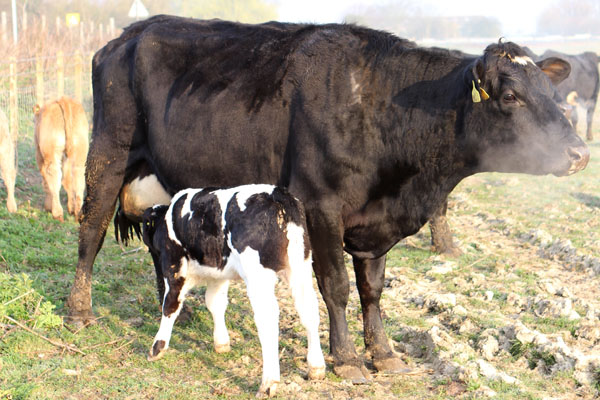 |
| this little one couldn’t get enough of mommies milk… |
Rosewood farm raises their dairy bulls for beef, they deliver England, Wales and Scotland
Calf at foot dairy produces raw milk and grass fed ruby veal from her gorgeous Jersey cows
Suffolk
Calf at foot dairy

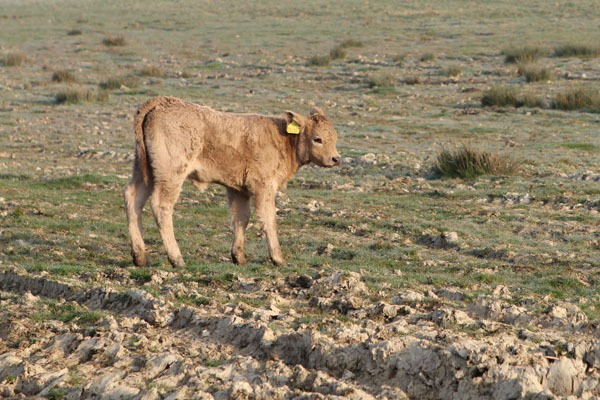
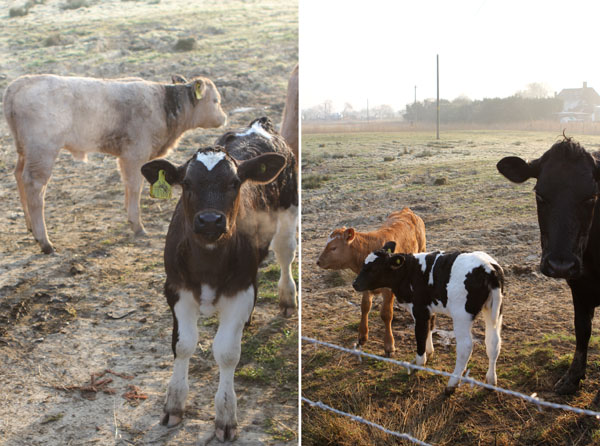
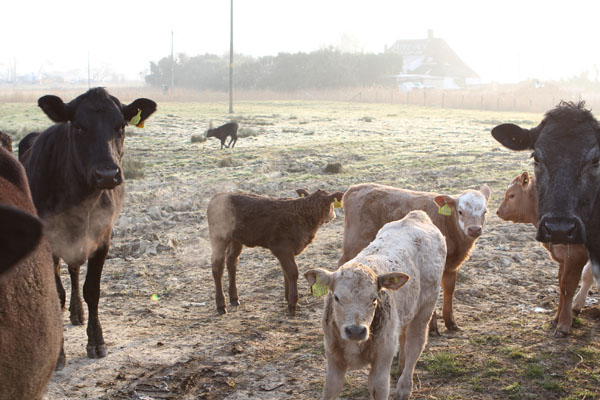
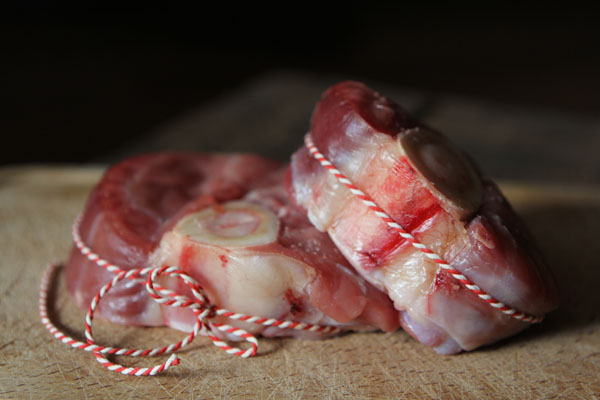
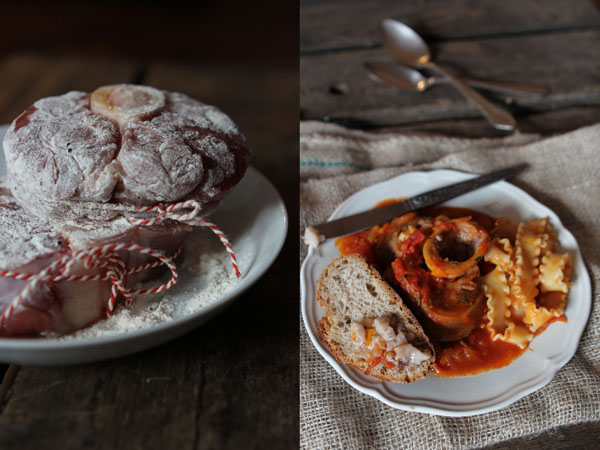
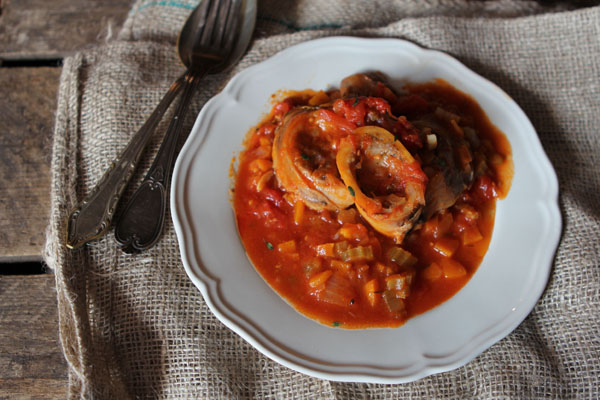






A very interesting post and important message! Food for thoughts. So true. Unfortunately, I never eat veal because here it costs too much and I cannot afford this meat…
This osso bucco is just splendid!
Cheers,
Rosa
So glad you liked it Rosa!
I think it's a shame when food prices are driven up by trends… Here veal has about the same price as lamb. But that said, I only eat meat once a week so that keeps costs down and makes my ecological footprint smaller.
xxx
I saw Jimmy's programme the other night and it was very sad to see the calves shot so young and their bodies go off to feed the National Grid and not the food chain. I will definitely make a point of asking my local supermarkets' head offices for Rose Veal. If we all did this they would have to listen.
Thank you Camilla, I am glad if I even get one person to ask for Rosé veal at their local butcher or store! Spread the word!
You raise some good points about a topic which will make a lot of people feel uncomfortable. We all have to take responsibility for the impact that food production has in shaping our world rather than close our eyes to selective parts of it.
It is always very sad to see people close their eyes to reality. Trying to open them can be a tough job I am willing to take on!
I had loads of good reactions to this post from farmers who all supplied me with their details and were very happy someone is taking an interest in their battle for saving bull calves from waste!
firstly, thanks so much for doing this post. I think a lot more people need to learn about eating ethically,, that's not necessarily going vegetarian, but learning to choose our meat wisely and being conscious about our food. secondly, wow the food looks just delicious, gorgeous photos and gorgeous recipe. very inspiring x
I have a few comments to make, firstly milk replacer, or milk, is not a restricted diet for a young bovine. Naturally a calf would drink it's mothers milk for at least eight months, supplemented increasingly throughout this time by forage to develop the rumen.
Secondly, most rose veal calves are not reared in open fields alongside their mothers on their mothers milk. The vast majority are from dairy bred calves that are taken off their mothers in order that the cow can supply our dairy. The calves are usually kept indoors in groups in straw yards and fed milk replacer or spare milk for the first few weeks of their life and then weaned early onto a cereal based diet in order to fatten more quickly than they naturally would.
The reason veal is expensive is that a) this cereal diet is not cheap & b) the cost of rearing to six months is the most expensive bit, and by eight months they don't put on as much weight to spread the costs over, so the price per kg must be higher to cover these costs.
Finally, the calves pictured are predominately beef calves that would, generally be bept for beef. Black & White Holstein Friesians &/or Jersey/Guernsey calves would have been more representative. Eating veal is not the only option, requesting dairy-bred beef from your butcher/supermarket is another one, or buying dairy bred beef direct from the farm.
Hi Rob, thanks for you comment!
As I stated in my post, the white veal is fed on a diet of only milk replacer (or other byproducts like whey), rose veal is fed on milk, (sometimes milk replacer) AND cereal and grass or straw.
I don't need to tell you this as you are the expert on the matter but white veal is fed only milk or milk replacer to keep the meat white.
In a lot of countries this also involves keeping the calves indoors where they will not see daylight, ever.
For Rose veal, the diet is much more than only milk so the meat colors pink instead of white and has more flavour.
Yes true, the calves aren't all reared in open fields with their mothers, but where they live is much better than were the majority of white veal calves live.
There is a good video about it on the website of Heaves farm.
The main goal of this post was not to get the people to ONLY eat veal but to get people to eat veal. A lot of people still think eating veal is a crime because of the horrid stories that came out in the nineties about calves being badly abused in their short lives. They would have been kept in very small spaces mostly on concrete flours, so they couldn't move or nibble on straw…
People remember this.
Also I think I wanted to show vegetarians who still eat bucket loads of cheese and campaign against eating meat, that they are responsible for those bull calves every time they drink a glass of milk.
I want to motivate everyone to buy straight from the farm and start thinking about what they eat. Therefore I added a list of producers and butchers who sell meat from those producers.
Change starts on our plates.
As we just had a conversation on twitter, I am glad to hear we are on the same page 🙂
Cheers,
Regula
I understand your sentiment; however, males are seldom produced – at least in the USA – because they can do gender selection now. It's only been developed recently though.
http://www.abc.net.au/landline/content/2006/s1624149.htm
Thanks for your comment.
I didn't know that but I'm not sure I approve of gender selection…
It will reduce the killing of bull calves but don't we interfere with everything too much?
Wow, I didn't know that about veal. I don't usually eat it because I don't like the taste, but I do eat alot of diary. This was a really interesting post, thank you for sharing it!
Thank you for commenting Holly, it's nice to hear from you!
Nice to find your blog and to learn that you are Belgian. I live in Italy and come back to the UK most summers. I used to go by car, but now I always have to go to London and it is impossible to park there. Many a time I have been through Belgium, stopping in various places — Gent, Brussels, Louvain, Antwerp, Tournai, Liège, and so on — and I love Belgium. About veal. Yes, I like it. My recipe for Osso Buco involves putting the sauce through the mouli-légumes, since I like a smooth sauce, and serving the thing on a nice yellow risotto. Veal bones make the best brown fonds de cuisine. The ‘brown’ (i.e. the crisp fat) on a roast of veal is delectable, just what the doctor ordered for me! Veal is also useful in pies and pâtés. And I do think we Brits are silly to be so squeamish about eating calves’ meat.
Glad to hear you like Belgium! Most people drive through it but never stop!
I had Osso Bucco for the first time on Valentines night,
We had a romantic meal in Carluccio’s, and the Rose Veal was excellent!
Out of curiosity I looked in my Antonio carluccio’s cook book from 1996
Guess what!
The OSSO BUCCO recipe is there,22 years old!!!!
We need to take a leaf from the Italians , Flights booked for an Easter trip….
you might want to use the right spelling if you use Italians words? The correct spelling is Osso Buco (one c) Osso means bone and Buco means hole. So this cut of meat is “bone with a hole” which is just what it is.
Bucco though doesn’t men anything, it’s just a bit dumb 😀
Oh Elisa luckily there are people like you so fabulous they point out people’s mistakes all the time… wait. No, you’re annoying, condescending and rude and may I point out that “doesn’t men anything” doesn’t mean anything, it’s just a bit…